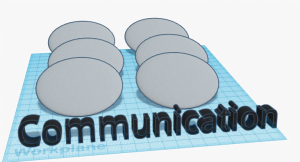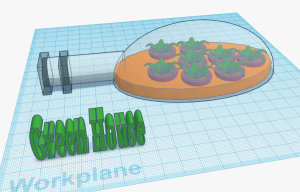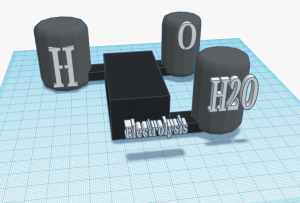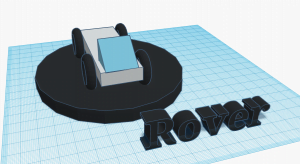Moon Camp Explorers Gallery 2020-2021
In Moon Camp Explorers each team’s mission is to 3D design a complete Moon Camp using Tinkercad. They also have to explain how they will use local resources, protect astronauts from the dangerous of space and describe the living and working facilities.
Team: Aplatlas 2021
John A. Sutter Middle School Winnetka United States 14
External link for 3d
|
Project description
We named our moon camp Aplatlas 2021 to honor the successful lunar “Apollo” space missions and the “Atlas” series of rockets . Both names combined are “Apatlas” with the number 2021 being the current year. We mainly would like to research plant growth on the Moon and the best ways to mine water from the ice water in the craters on the lunar poles. Our Moon camp will support up to two astronauts and will be built underground in the South pole near the rim of the Shackleton crater. Our camp will be built out of materials from the earth and some materials from the moon. Solar panels will be installed near the rims of the Shackleton crater where there is plenty sunlight. Food for the astronauts will be provided by growing crops on the moon in a greenhouse. Some of the food we will grow include carrots, beets, and potatoes. Astronauts will be protected from the solar radiation by wearing protective suits outside. Additionally, there will be pool of water inside of the Moon base to protect them from extreme radiation like during solar flares. Oxygen will be supplied to the astronauts by electrolyzing the water we get from the ice water on the Moon.
|
|||
|
Where do you want to build your Moon Camp?
Close to the Lunar Poles Why did you choose this location?
Our Moon Camp will be located in the South pole near the rim of the Shackleton crater. We chose this place because it gets a balanced amount of nights and days. Additionally, the South pole contains ice water and may be rich in other resources based on NASA, ESA and other space agency observations. The South pole also is a good place to have our moon camp because its the most thoroughly investigated region on the Moon. How do you plan to build your Moon Camp? Which materials would you use?
We plan on building our base using a variety of common materials such as high strength plastics, metal, regolith (soil on the moon), and radiation blocking glass. We will make our structures durable and replaceable since you’d have to expect the unexpected sometimes on the moon. The materials don’t cost much since we are using mostly regolith to build. 3D printing rovers will make strong regolith bricks they will cover an inflatable structure made of metal and strong plastics. Explain how your Moon Camp will provide the astronauts with:
|
|||
|
Water
|
Food
|
Electricity
|
Air
|
|
We will research different lunar technologies for melting ice water on the Moon. We will use a rover that simultaneously drills, heats and collects ice water. We will also research the use concave mirrors to reflect the sun down into the craters to melt the ice. After we contain the melted ice we will purify the water using filters and rovers will transport it to our moon camp. This water will be used for hydration, growing plants, testing and fuel. To prevent wasting water, we will recycle water in the moon camp the way they do on the ISS. |
We will provide food for our astronauts by growing food and plants on the Moon in a green house. Foods we will grow are potatoes, carrots, garlic, and beets. One main reason why we chose all of these foods is because they’re fast and easy to grow. We will also grow algae for oxygen. If we ever run out of food we will contact NASA via our computer/communications room to send us more food supplies. |
We will use solar panels as our main source of electricity and batteries as backup in case of emergencies. We will place the solar panels on a pad that detects where the sun is located and rotates the solar panels to face the sun so we will always be collecting the most solar energy. |
We will produce oxygen for the astronauts many ways to learn which works best. We will use the Metalysis process to extract oxygen from regolith. The process requires adding electricity to regolith heated to 950 degrees Celsius. We will also grow algae to produce oxygen, which is much easier. Using this method requires growing 80 square meters of algae per astronauts. Finally, we will also use electrolysis to get oxygen (O2) from the water (H2O) extracted at the lunar poles. |
|
Describe a day on the Moon for one of your Moon Camp astronauts
The astronaut wakes up in their bedroom and dresses themselves. When finished they will use the bathroom. Then they will head down into the kitchen to grab a bite of packaged food and plants grown from the garden on the same floor. They will exercise in the gym for hours to keep their bones and muscles healthy. After they will check supplies, filtering systems, clean their area, and continue working on experiments. They do all this from inside the moon base. After a long day, the astronaut will eat, clean themselves, and then relax by reading books, contacting family and friends or playing games inside of the moon base. |
|||






